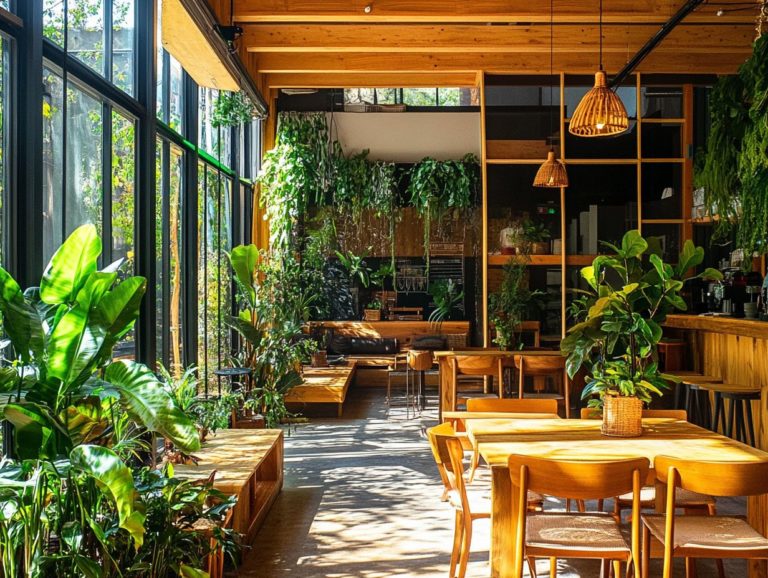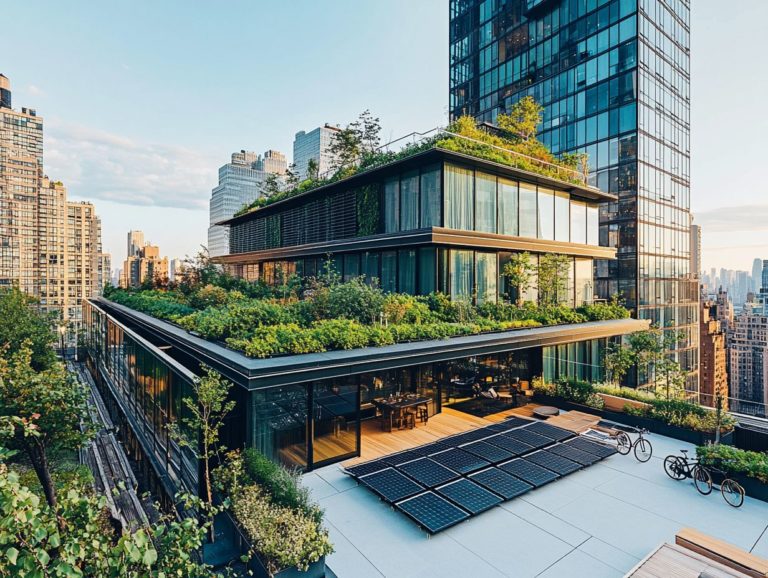Best Eco-Lodges in South America
Light is crucial for the growth of your plants, but the way you manage it can have a profound impact on their overall health.
This article delves into the importance of light rotation, explaining why it s essential for optimal growth and the key factors to consider before you make any adjustments.
Discover the types of plants that thrive on rotation and how to troubleshoot common issues. Practical methods and tips will be shared to help ensure your plants flourish.
Explore the insights within to discover how you can maximize the benefits of light rotation for your garden!
Contents
- Key Takeaways:
- Understanding the Importance of Light Rotation for Plants
- Factors to Consider Before Rotating Plants
- Methods for Turning Plants
- Troubleshooting Common Issues with Light Turning
- Maximizing the Benefits of Light Rotation
- Frequently Asked Questions
- 1. How often should I rotate my plants for even light?
- 2. What is the best direction to rotate my plants?
- 3. How do I know if my plant needs to be rotated?
- 4. Can I rotate my plants at any time of the day?
- 5. Can I use artificial light to rotate my plants?
- 6. Do all types of plants need to be rotated for even light?
Key Takeaways:
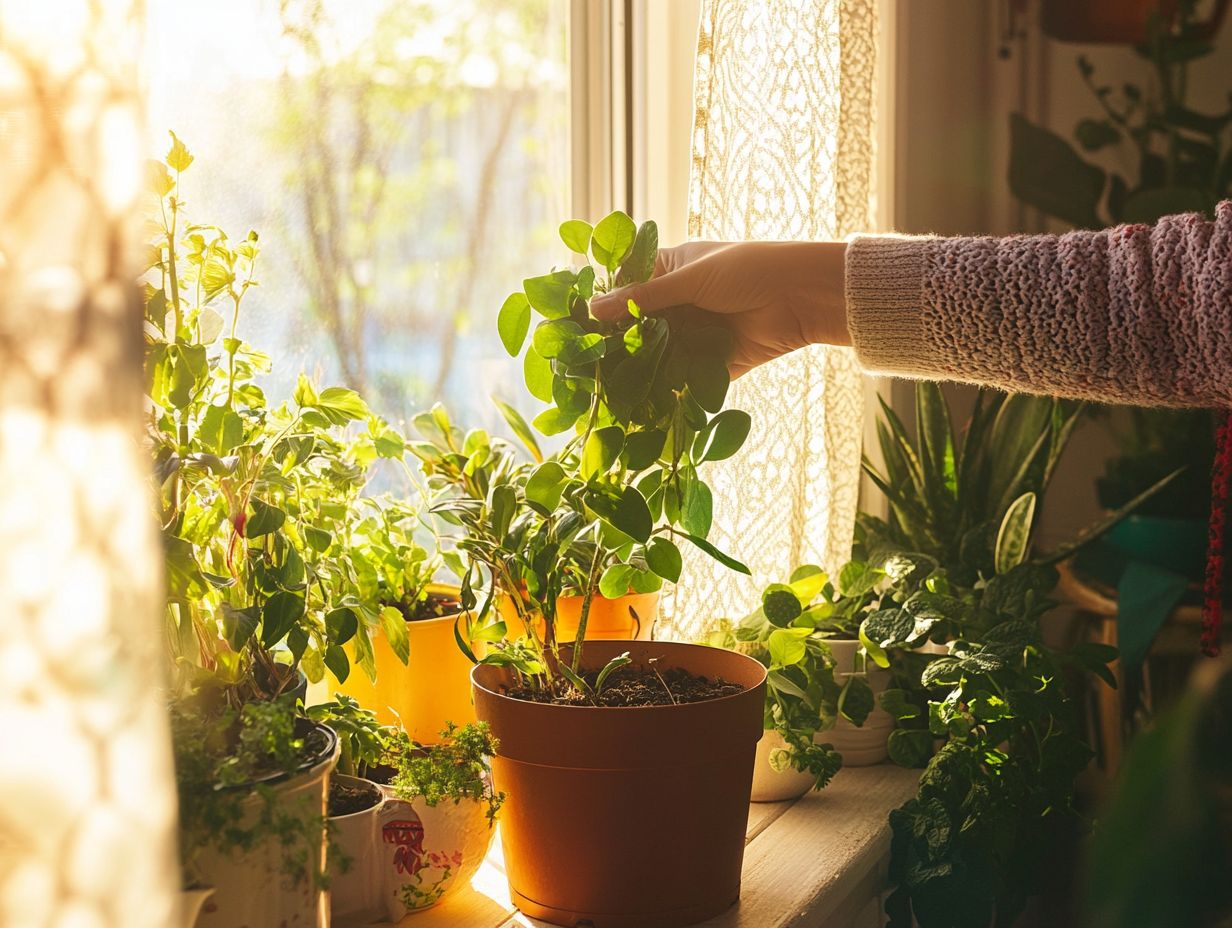
- Understand why light rotation is crucial for plant growth.
- Consider plant types and frequency of rotation.
- Use manual techniques or artificial lights to help your plants.
- Identify and troubleshoot signs of uneven light distribution.
- Maximize benefits with additional tips for healthy plant growth.
Understanding the Importance of Light Rotation for Plants
Recognizing the significance of light rotation for your plants is crucial for cultivating a thriving garden and ensuring the health of your houseplants. Light rotation entails adjusting the position of your indoor greenery to maximize light exposure, fostering a natural process that enhances photosynthesis.
By offering optimal light from various angles, you can encourage auxin growth a hormone that encourages plant growth and prevent unwanted elongation. This results in bushier, more vibrant plants. This straightforward approach not only promotes healthier growth but also helps mitigate pest issues, leading to resilient plants that flourish both indoors and in your community garden.
Why Light Rotation is Necessary for Plant Growth
Light rotation is essential for the growth of your plants, as it significantly influences their growth process and overall health, making your houseplant care both effective and efficient.
Plants depend on light to fuel the photosynthetic process, transforming sunlight into the energy they need to thrive. Different light intensities can sway growth rates; too little light can leave your plants looking weak and leggy, while too much brightness might scorch their precious leaves.
The angle of light exposure is a pivotal factor; plants naturally lean towards their light source, a delightful phenomenon known as phototropism. To create the best conditions for your plants, consider regularly rotating their pots or adjusting your light sources to ensure that every leaf enjoys equal exposure.
Incorporate grow lights or reflective surfaces to enhance light distribution. This will elevate the growth experience and vitality of your beloved plants.
Factors to Consider Before Rotating Plants
Before you rotate your plants, it’s essential to consider several factors. Take into account the type of light source you have, the optimal timing for rotation, and the specific needs of both your indoor and houseplants.
Each element plays a crucial role in ensuring your plants thrive in their environment, contributing to their overall health and growth rates.
Types of Plants that Require Light Rotation
Certain types of plants, particularly variegated houseplants and those with a tropical flair, require regular light rotation to maintain their vibrant colors and foster healthy growth.
Take the variegated pothos and specific snake plants, for example. They thrive on a rotation schedule that ensures every side gets its fair share of sunlight. This simple practice not only promotes even growth but also wards off those unsightly leggy stems that can ruin a plant’s charm.
Even low-maintenance options like peace lilies or ZZ plants benefit from occasional repositioning, although they tend to be a bit more forgiving. By grasping their unique care needs, you can cultivate lush greenery and striking aesthetics effortlessly, even if you re just starting out on your plant journey.
How Often to Turn Plants
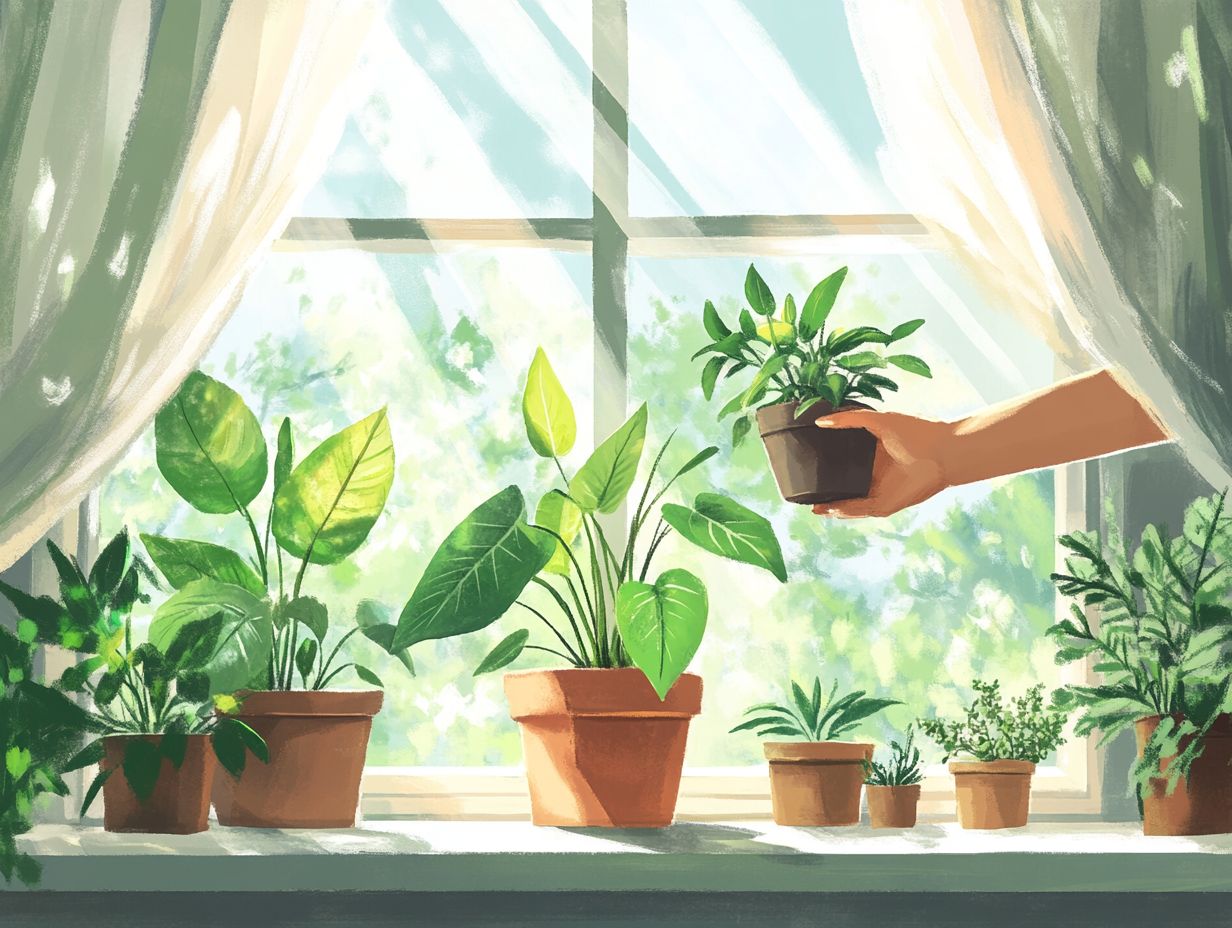
Turning your plants regularly ideally a quarter turn each week is essential for ensuring they receive even light exposure. This is crucial for optimal growth.
This simple technique encourages balanced development. It prevents one side from stretching toward the light while the other side remains in shadow. The frequency of turning can vary based on the type of plant.
- For example, slower-growing varieties like snake plants or ZZ plants may only need monthly adjustments. In contrast, faster-growing plants such as pothos or philodendrons might benefit from a bi-weekly rotation to keep their leaves healthy and evenly spaced.
Understanding the specific light requirements for each plant type will guide you in establishing the best turning schedule. This ensures your plants thrive magnificently in their environment, especially in community gardens.
Methods for Turning Plants
You have several effective methods for turning plants. These include manual turning techniques and using artificial light sources, like specialized light bulbs, to optimize their exposure to light.
Manual Turning Techniques
Manual turning techniques involve physically repositioning your houseplants. This guarantees that all sides receive equal light exposure, significantly enhancing their health.
This practice is particularly beneficial for plants that lean toward their light sources. It encourages a more balanced growth pattern. To effectively implement this technique, evaluate the light requirements of each plant, considering whether they thrive in direct sunlight or prefer partial shade.
By positioning them appropriately while turning, you ensure that each plant absorbs the ideal amount of light without experiencing stress.
For example, place sun-loving plants in brighter spots. Provide shade-tolerant varieties with a more diffused light environment to optimize their growth and overall flourishing.
Using Artificial Light Sources
Using artificial light sources, like fluorescent lights paired with light meters, gives you the power to maintain consistent light intensity for optimal plant growth. This is especially helpful when natural light is scarce.
These lighting solutions are practical alternatives during the winter months or in spaces that suffer from poor sunlight exposure. It’s exciting to discover how each plant thrives differently! For example, some can adapt to lower light levels, while others demand higher intensity to truly flourish.
By measuring light intensity with light meters, you can customize your lighting setup. Adjusting the distance between your plants and the light source allows you to optimize growth while preventing issues like leaf burn or insufficient photosynthesis.
Troubleshooting Common Issues with Light Turning
Troubleshooting common issues with light turning is crucial for keeping your plants vibrant and thriving. By doing so, you create an environment that fosters a thriving indoor oasis, where your greenery can truly flourish.
Signs of Uneven Light Distribution
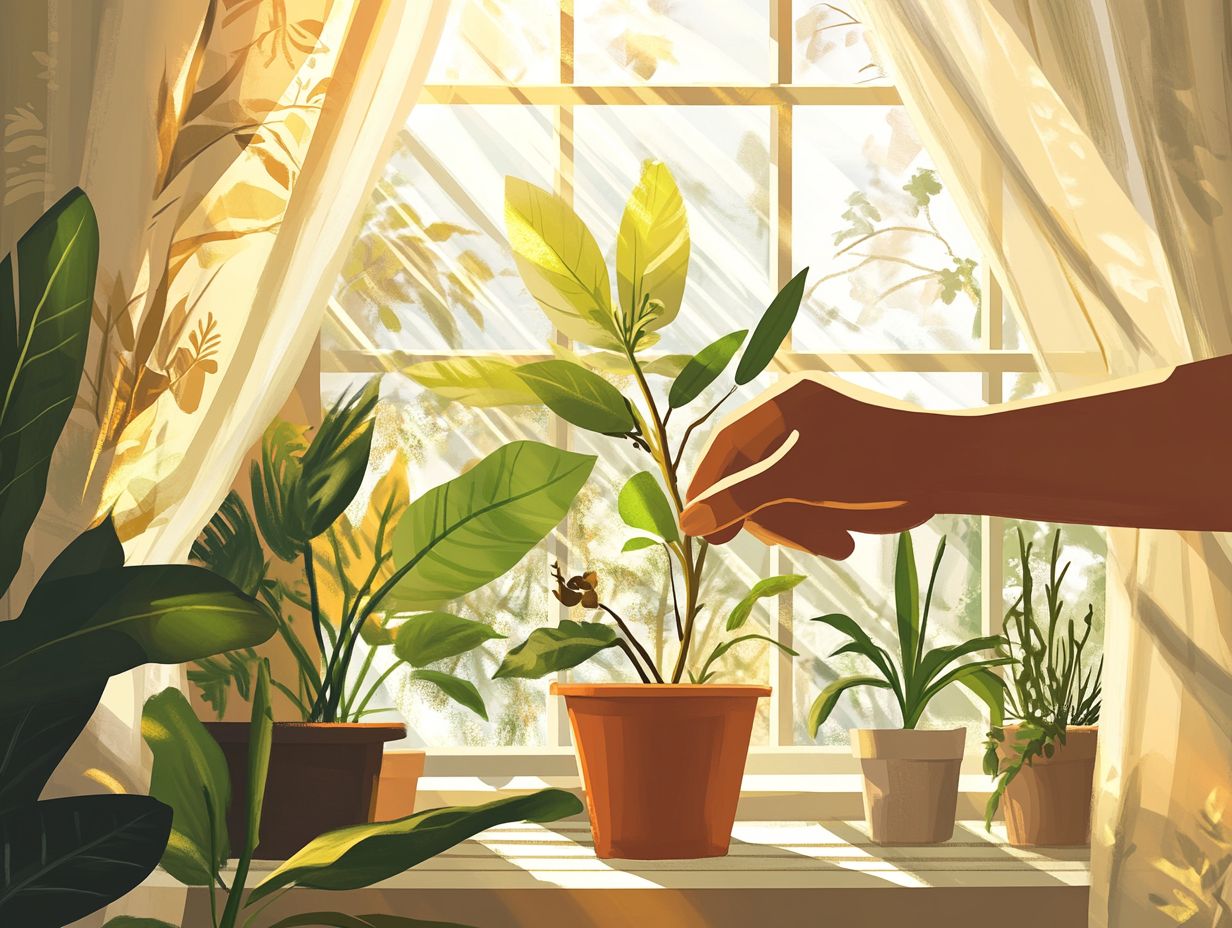
Signs of uneven light distribution in your indoor plants can manifest as elongated, spindly growth or pale foliage. These signs indicate that your plants aren t getting the light they need, leading to longer, spindlier stems and unhealthy aesthetics.
If you notice lower leaf production or yellowing leaves, this is a vital sign that your plants are missing essential light. Fortunately, these issues can often be fixed with simple adjustments.
Rotate your plants regularly to ensure every side gets a fair share of sunlight. Place them near the brightest windows, or add extra lights for growth when natural light falls short. These changes can work wonders in restoring their vibrancy.
Watch for these signs to keep your plants thriving! By making timely adjustments, you can significantly enhance both their health and aesthetic appeal.
Tips for Solving Light Rotation Problems
Solving light rotation problems involves making simple adjustments in plant positioning and timing. This will ensure optimal health and growth.
Regularly assess the amount of light each plant receives. Make informed decisions about when to rotate them for maximum exposure. This might mean moving pots closer to windows or under grow lights as the seasons change.
Maintain a consistent schedule for these adjustments. For example, rotate your plants weekly for better growth patterns.
Observe how the plants respond over time to deepen your understanding of their specific light needs. This will help you fine-tune your rotation strategy and create an ideal growth environment.
Maximizing the Benefits of Light Rotation
To truly maximize the benefits of light rotation, consider implementing additional strategies that promote healthy plant growth and enhance the vibrancy of your indoor garden. This will ensure that every houseplant thrives.
Additional Tips for Healthy Plant Growth
Incorporating extra gardening tips will elevate the health of your plants and ensure that your indoor oasis flourishes throughout the year. By following simple solutions for houseplant care, you can achieve vibrant garden results.
To cultivate a lively environment for your houseplants, it s essential to consider their unique light requirements. These can vary significantly between species. Understanding the balance between direct sunlight and shaded areas will greatly influence their overall well-being.
For instance, while succulents thrive in bright, direct light, ferns prefer soft, indirect illumination.
Regularly rotating your plants helps them enjoy an even distribution of sunlight, promoting symmetrical growth. Introducing a humidity tray or misting during drier months can also nurture their vitality, allowing your green companions to flourish and elevate your living space.
Frequently Asked Questions
1. How often should I rotate my plants for even light?
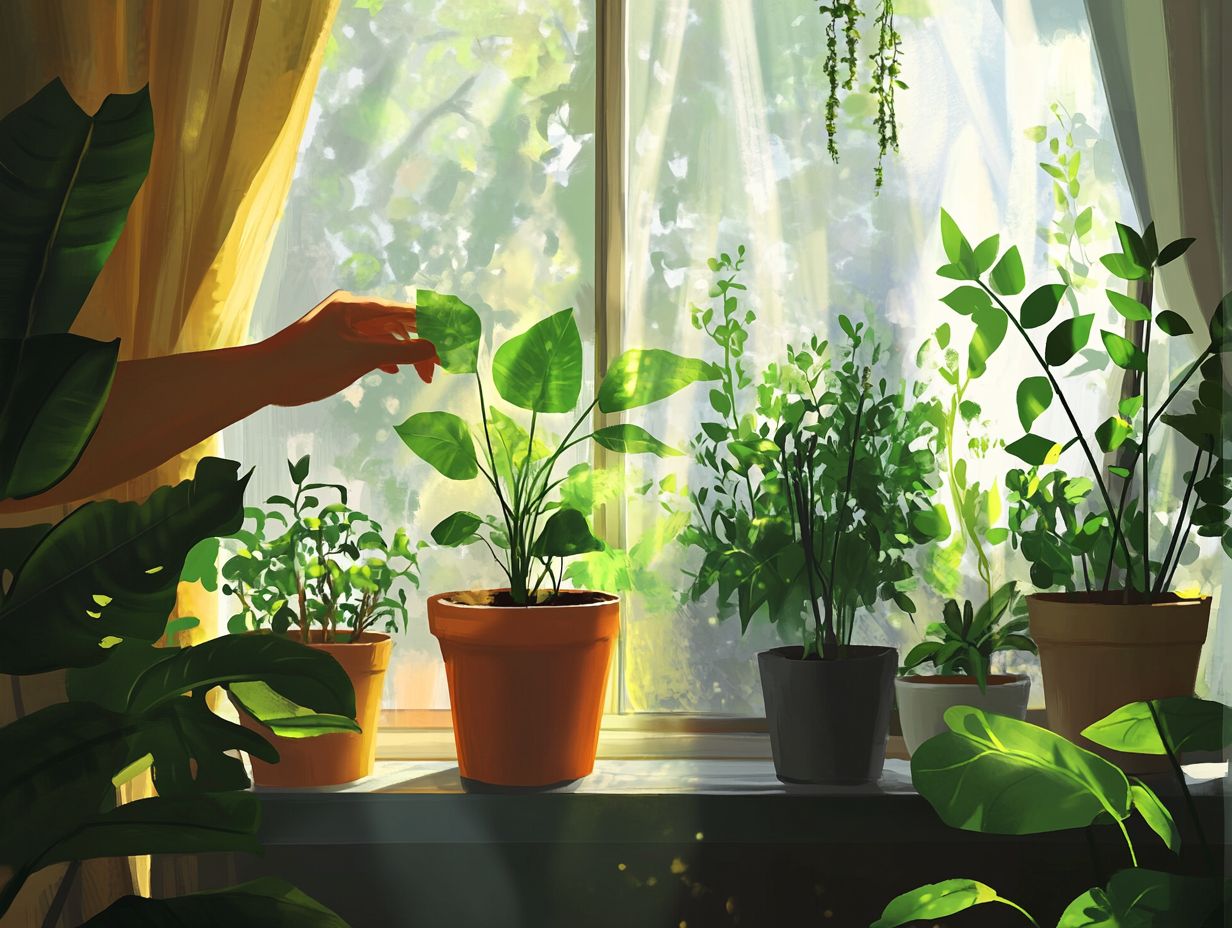
Rotate your plants weekly to ensure they receive even sunlight and prevent them from leaning towards the light source.
2. What is the best direction to rotate my plants?
Rotate your plants clockwise or counterclockwise, depending on your preference. The key is to ensure all sides receive equal amounts of light.
3. How do I know if my plant needs to be rotated?
If your plant is leaning towards one side or if the leaves are reaching towards the sunlight, it needs to be rotated for even light distribution.
4. Can I rotate my plants at any time of the day?
It s best to rotate your plants during the day when there is natural sunlight. This helps the plant adjust to the new light direction and prevents shock or stress.
Feel free to explore our other tips for vibrant plants!
5. Can I use artificial light to rotate my plants?
Yes, you can use artificial light to rotate your plants. Just ensure that all sides of the plant receive equal amounts of light.
6. Do all types of plants need to be rotated for even light?
Yes! All plants benefit from being rotated for even light.
Sunlight is vital for how plants make their food, so it’s crucial that every part of the plant gets enough light.

